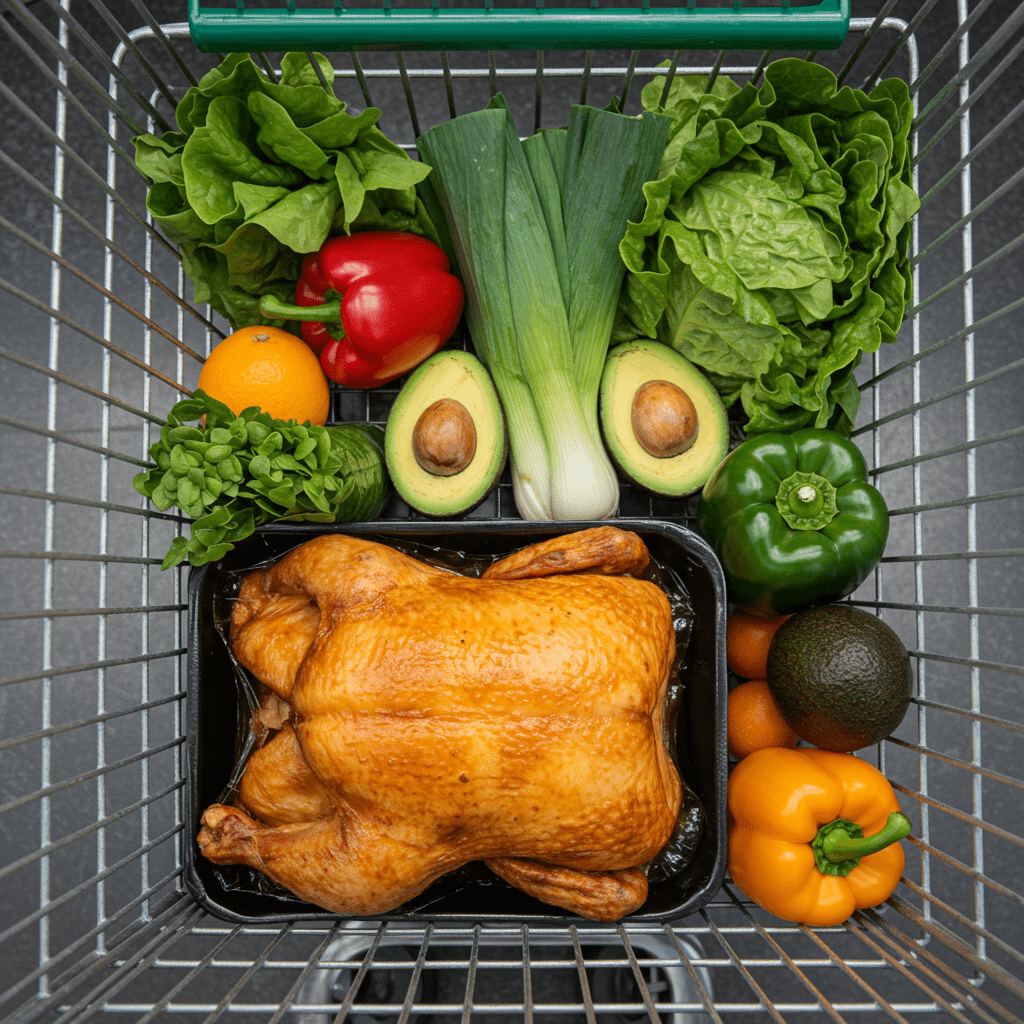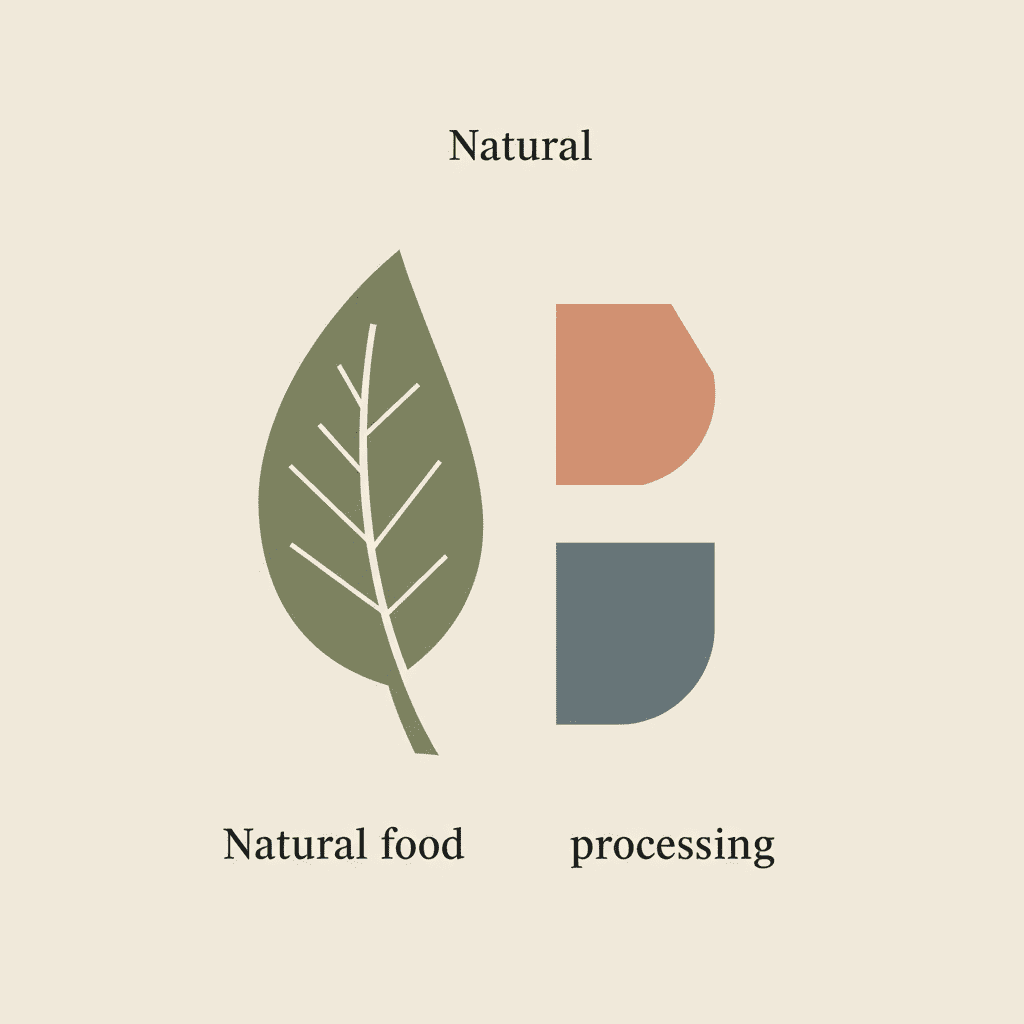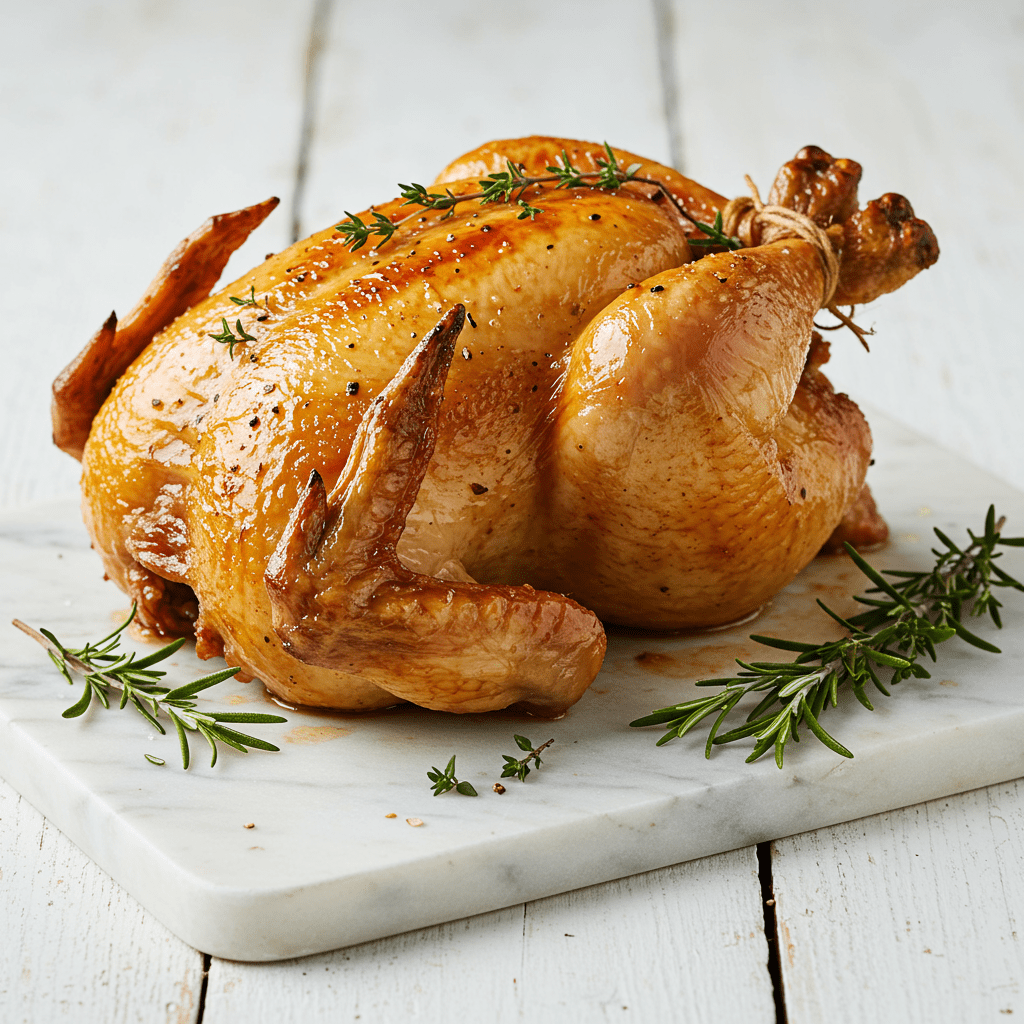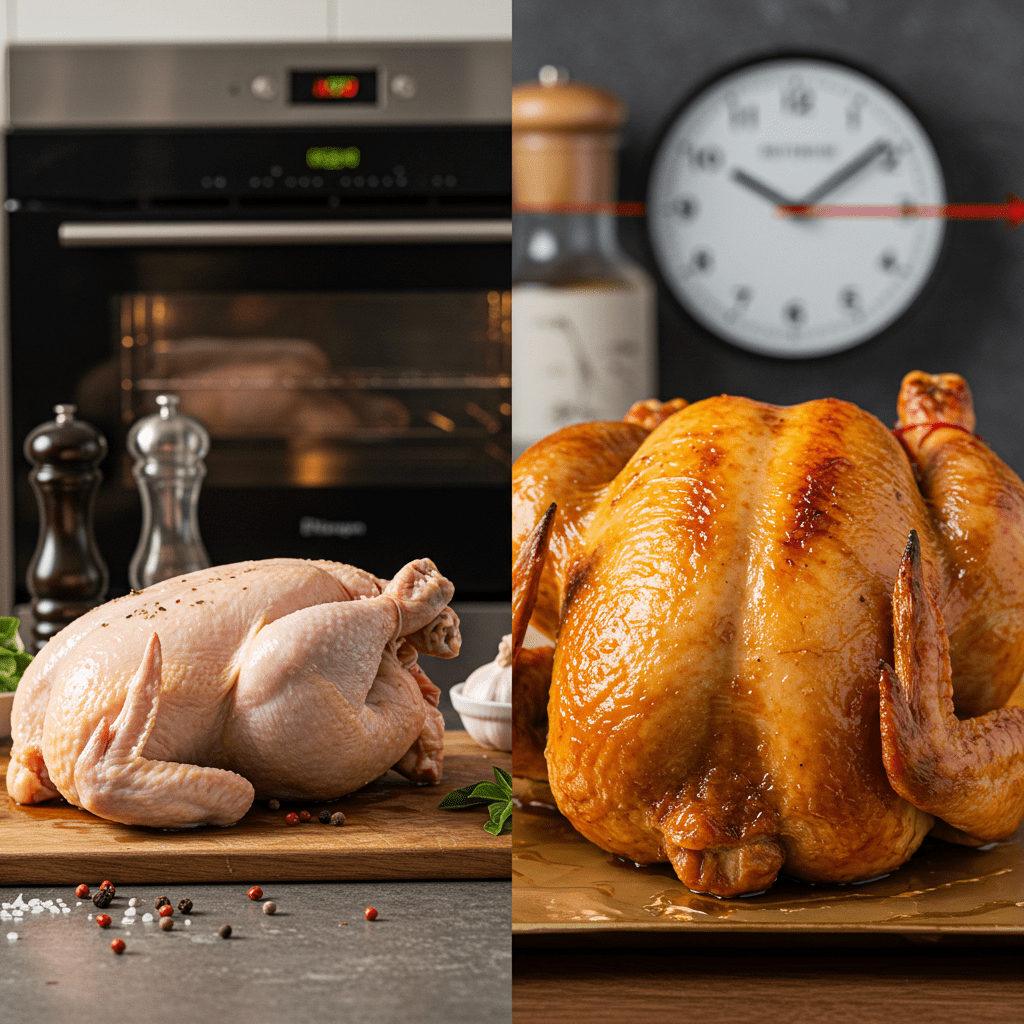Is Rotisserie Chicken Actually Good for You? A Dietitian’s Honest Answer

You know the feeling—you’re rushing through the grocery store after a long day, and that incredible smell hits you. The golden, spinning birds under the heat lamps promise a quick, easy, and delicious dinner.
Rotisserie chicken is a lifesaver for busy weeknights. But amidst the convenience, a nagging question often pops up: is it actually a healthy choice?
As a registered dietitian who believes in realistic nutrition, I’m here to cut through the confusion. We’ll look beyond the crispy skin to examine the sodium, additives, and overall nutritional value to help you decide if this popular shortcut deserves a spot in your shopping cart.
- What’s Really in a Store-Bought Chicken Besides Chicken?
- How Does It Stack Up Nutritionally?
- Let’s Talk About the High Sodium Content
- Should You Actually Worry About the Additives?
- What Are the Real Health Benefits of Grabbing One?
- How to Pick a Healthier Chicken at the Store
- Smart Ways to Build a Balanced Meal Around It
- Does Cooking Your Own Chicken Actually Save Money?
- Don’t Waste the Bones Make Your Own Broth
- Conclusion
What’s Really in a Store-Bought Chicken Besides Chicken?

A homemade roasted chicken contains one ingredient: chicken (plus your own seasonings). A store-bought rotisserie chicken, however, is often more complex.
To achieve that consistent flavor, juicy texture, and long-lasting freshness, most grocery store chickens are injected with a solution or covered in a seasoning blend. Common ingredients you might find on the label include water, salt, sugar, and various flavor enhancers.
One of the most significant additions is sodium phosphate, which helps the meat retain moisture and stay tender. While the FDA considers sodium phosphates safe for consumption, they do contribute to the overall phosphorus and sodium content, which can be a concern for individuals with kidney issues.
Other potential additives include carrageenan, a thickener derived from seaweed, and maltodextrin, a processed carbohydrate, both used to improve texture and appearance. Understanding these additions is the first step in making an informed choice.
How Does It Stack Up Nutritionally?

When you set aside the additives, the chicken itself is a nutritional powerhouse. It’s an excellent source of high-quality, complete protein, which is vital for building and repairing tissues, supporting immune function, and maintaining muscle mass.
A 3-ounce (85g) serving of rotisserie chicken without skin provides around 22-25 grams of protein. According to the USDA FoodData Central, this serving size also contains key nutrients like selenium, an antioxidant that protects cells from damage, and B vitamins such as niacin (B3) and pyridoxine (B6), which are crucial for energy metabolism.
The main nutritional difference between light meat (breast and wings) and dark meat (thighs and drumsticks) is the fat content. Health experts note that dark meat contains more fat and therefore more calories, but it’s also richer in iron and zinc.
Let’s Talk About the High Sodium Content

The biggest nutritional red flag for store-bought rotisserie chicken is its sodium content. A single 3-ounce serving can contain anywhere from 300 to over 600 mg of sodium, depending on the brand.
For context, the American Heart Association recommends that adults consume no more than 2,300 mg of sodium per day, with an ideal limit of 1,500 mg for most adults. That means a small portion of rotisserie chicken can account for a quarter or more of your ideal daily sodium intake.
This high sodium load comes from the brining solutions and seasoned rubs used to make the chicken flavorful and juicy. While this isn’t a deal-breaker for everyone, people with high blood pressure or those who are salt-sensitive should be particularly mindful.
One easy way to mitigate this is to avoid eating the skin, as much of the seasoning resides there.
Should You Actually Worry About the Additives?

The word ‘additives’ can sound alarming, but it’s important to look at the science. Ingredients like carrageenan and sodium phosphates are approved by regulatory bodies like the U.S. Food and Drug Administration (FDA) and are considered safe in the amounts used in food production. Carrageenan, for instance, has been a subject of online debate, but comprehensive reviews of scientific literature, such as those published in food science journals, have reaffirmed its safety for the general population when consumed in processed foods.
Sodium phosphates serve a functional purpose in keeping poultry juicy. The primary concern with these is less about their inherent danger and more about the fact that they are markers of a more processed product. For people focused on whole foods, this is a valid consideration for many grocery store items, from convenient dinners to popular drink mixes.
If your goal is to eat a diet based on whole, unprocessed foods, then a rotisserie chicken might be something you have occasionally rather than daily. For most healthy individuals, the additives in a standard rotisserie chicken are not a significant health risk.
What Are the Real Health Benefits of Grabbing One?

The number one benefit is convenience, and as a dietitian, I can tell you that convenience is a huge factor in maintaining a healthy diet long-term. Having a ready-to-eat source of lean protein can be the difference between a balanced meal and a less nutritious option like fast food.
Research published in the American Journal of Clinical Nutrition consistently shows that meals high in protein increase feelings of fullness, or satiety. This can help with weight management by preventing overeating later.
By pairing rotisserie chicken with a large salad, a side of steamed vegetables, and a whole grain like quinoa or brown rice, you can assemble a nutrient-dense, satisfying meal in minutes. It’s a strategic shortcut that supports, rather than sabotages, your health goals.
How to Pick a Healthier Chicken at the Store

You can be a savvy shopper when it comes to rotisserie chicken. First, become a label detective. Many stores now offer healthier versions, such as those labeled ‘simple,’ ‘natural,’ or ‘organic.’ These often have shorter ingredient lists with fewer additives. Some may even have ‘no salt added’ varieties.
If nutritional information isn’t on the package, don’t be afraid to ask the deli counter staff if they have it available. When possible, opt for organic chicken.
While not necessarily lower in sodium, it ensures the chicken was raised without antibiotics. Finally, look at the chicken itself.
Choose one that looks plump and moist, but not overly greasy. A puddle of fat at the bottom of the container is a sign you might want to pick a different one.
Smart Ways to Build a Balanced Meal Around It

Think of rotisserie chicken as your protein base, ready to be transformed. The key is to surround it with nutrient-dense, whole foods. Instead of just eating the chicken with a simple carb, try building a ‘Power Bowl.’ Start with a base of mixed greens or quinoa, add a generous portion of shredded chicken (skin removed), and then pile on colorful vegetables like roasted broccoli, cherry tomatoes, and cucumber. Top it with a healthy fat source like avocado slices or a drizzle of olive oil vinaigrette.
You can also use the chicken to bulk up soups, toss it into whole-wheat wraps with hummus and veggies, or create a quick and healthy chicken salad using Greek yogurt instead of mayonnaise. This approach, similar to creating a lighter take on a classic casserole, maximizes the nutritional benefit while minimizing the impact of the extra sodium.
Does Cooking Your Own Chicken Actually Save Money?

From a purely ingredient-based perspective, buying a whole raw chicken is almost always cheaper per pound than buying a pre-cooked rotisserie chicken. For example, a raw chicken might cost $8 for 4 pounds, while a rotisserie chicken costs $8 for 2 pounds.
However, this calculation doesn’t factor in the cost of your time, energy, and the electricity or gas used to cook it for over an hour. This is why many stores, like Costco with its famous $4.99 chicken, use rotisserie chickens as ‘loss leaders’—they sell them at a low price to attract customers who will then buy other, higher-margin items.
The real value of a rotisserie chicken is not in its price, but in the time and effort it saves you, which for many busy people, is worth the extra cost.
Don’t Waste the Bones Make Your Own Broth

Once you’ve picked all the meat from the chicken, don’t throw the carcass away! You have the base for a delicious and nutrient-rich homemade chicken broth.
Simply place the leftover bones and skin in a large stockpot or slow cooker, add some vegetable scraps (like carrot peels, celery ends, and onion skins), and cover everything with water. Let it simmer on low for several hours (or all day in a slow cooker).
The result is a flavorful broth that’s far superior to store-bought versions and contains beneficial gelatin and minerals. You can use this liquid gold as a base for soups, to cook grains like rice or risotto, or simply sip it on its own.
It’s a fantastic way to reduce food waste and get every last bit of value from your purchase.
Conclusion
So, what’s the final verdict? Rotisserie chicken can absolutely be a healthy, convenient part of your diet.
As a dietitian, I see it as a valuable tool for busy people. It provides high-quality protein and essential nutrients that can form the foundation of a quick, balanced meal.
The primary drawbacks—high sodium and additives—are valid concerns, but they can be managed by reading labels, choosing simpler formulations, removing the skin, and pairing the chicken with plenty of fresh vegetables and whole foods. It’s about balance and making informed choices.
Instead of labeling it ‘good’ or ‘bad,’ view it as a strategic shortcut that, when used wisely, can help you stay on track with your health goals, even on the most hectic of days.
